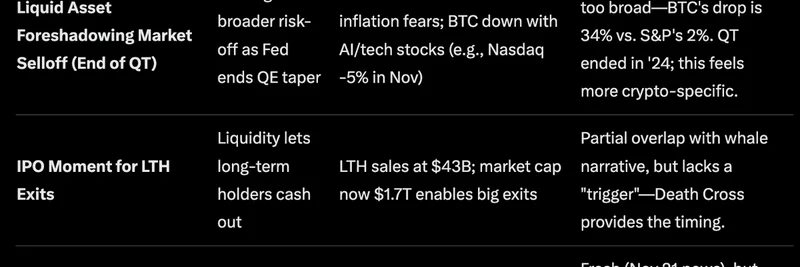In the ever-evolving world of cryptocurrency, bold predictions often spark heated debates and wild speculations. A recent post on X by DeFi expert Ignas (@DefiIgnas) introduced what he calls the "10% SoV Law," a simple yet intriguing framework for valuing assets like Bitcoin (BTC) and Zcash (ZEC) against gold's massive market presence. This idea quickly gained traction, drawing comments from prominent figures in the crypto space. Let's break it down and see what it could mean for investors and meme token enthusiasts alike, as narratives like this often fuel the next big pump.
Understanding the 10% SoV Law
SoV stands for "Store of Value," a term used for assets that maintain or increase their worth over time, even in volatile markets. Think of gold, which has been a go-to SoV for centuries due to its scarcity, durability, and universal appeal. In the crypto realm, Bitcoin is often hailed as "digital gold" for similar reasons—limited supply (capped at 21 million coins) and resistance to inflation.
Ignas's law applies a cascading 10% capture rule:
- Gold's current market capitalization (MC) is approximately $28.3 trillion.
- If BTC captures just 10% of gold's MC, that would value Bitcoin at $2.83 trillion. Based on its current price around $93,000, this implies a jump to about $141,000 per BTC—a solid 52% upside.
- Taking it a step further, if ZEC captures 10% of BTC's projected MC, Zcash would hit a $283 billion valuation. With ZEC's circulating supply of around 16.4 million coins, this translates to a price tag of roughly $17,400 per ZEC—an astonishing 2,725% increase from its current level near $627.
This isn't just number-crunching; it's a narrative about hierarchy in the SoV space. Gold at the top, BTC as the digital challenger, and ZEC as the privacy-enhanced underdog.
Why Zcash? The Privacy Angle
Zcash isn't your typical meme token—it's a serious privacy coin forked from Bitcoin's codebase in 2016. What sets it apart is its use of zero-knowledge proofs (specifically zk-SNARKs), which allow transactions to be fully shielded. This means you can send or receive ZEC without revealing sender, receiver, or amount details, all while maintaining blockchain verifiability.
In a era where data privacy is paramount—think government surveillance, hacks, and regulatory scrutiny—ZEC positions itself as "private money" or even "shielded Bitcoin." Proponents argue that as BTC solidifies its SoV status, demand for private alternatives will grow. If Bitcoin becomes the reserve asset for nations and institutions, ZEC could serve as the discreet version for those needing anonymity.
However, ZEC has faced challenges, including delistings from some exchanges due to privacy concerns and slower adoption compared to flashier alts. But with recent 7-day gains of nearly 30%, the market seems to be warming up. Could this SoV narrative be the catalyst for a comeback?
The ETH Snub and Broader Implications
One notable reaction came from Ryan Sean Adams (@RyanSAdams), co-founder of Bankless, who pointed out the omission of Ethereum (ETH): "the lengths ppl go to on this app to not include ETH as a SoV." Ignas responded by acknowledging ETH's convoluted story, flipping between SoV, ultrasound money, and DeFi hub.
This highlights a key point: Crypto narratives matter. ETH's multi-faceted role makes it harder to pitch as a pure SoV, whereas BTC and ZEC have clearer, more focused stories. For meme token fans, this is reminiscent of how simple, viral ideas—like dog-themed coins or pump.fun launches—can drive outsized returns. While ZEC isn't a meme, the "10% SoV Law" has that memetic potential, spreading quickly on Crypto Twitter (CT) and potentially attracting retail flows.
Is This Realistic? Risks and Opportunities
Of course, capturing 10% market share isn't guaranteed. Gold's dominance is entrenched, BTC faces regulatory hurdles, and ZEC must overcome its own stigma around privacy (often associated with illicit use, though data shows otherwise). Market caps can fluctuate wildly—gold's $28.3T is based on current estimates, and crypto is notoriously volatile.
That said, the asymmetry is appealing. ZEC's current market cap is just over $10 billion, a fraction of BTC's $1.9 trillion. If privacy becomes a premium feature in the next bull cycle, especially with advancements in DeFi and Web3, ZEC could indeed see explosive growth.
For blockchain practitioners, this serves as a reminder to diversify beyond memes. Privacy tech like ZEC's could integrate with meme ecosystems, enabling anonymous launches or trades—enhancing the fun without the risks.
Check out the original thread on X for more reactions, and keep an eye on ZEC's price action. As always, DYOR (do your own research) before aping in—this is speculation, not financial advice.
At Meme Insider, we're all about decoding these trends to help you stay ahead in the wild world of crypto. What do you think—will the 10% SoV Law play out? Drop your thoughts in the comments!



